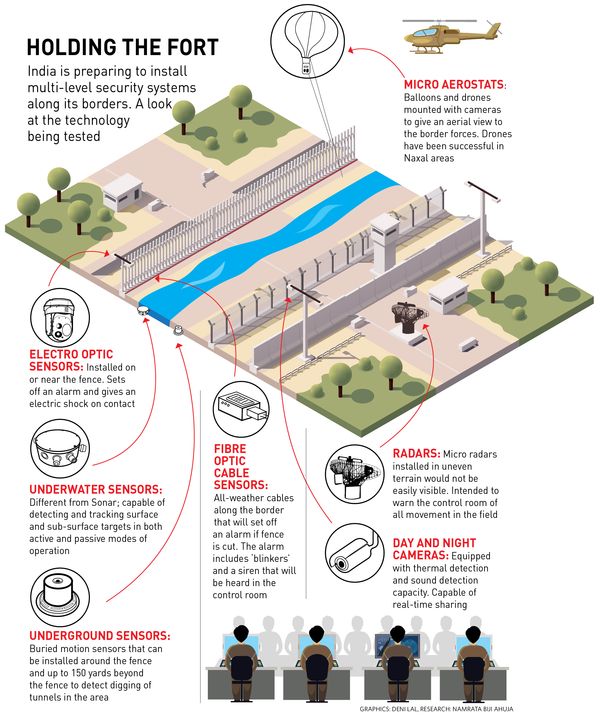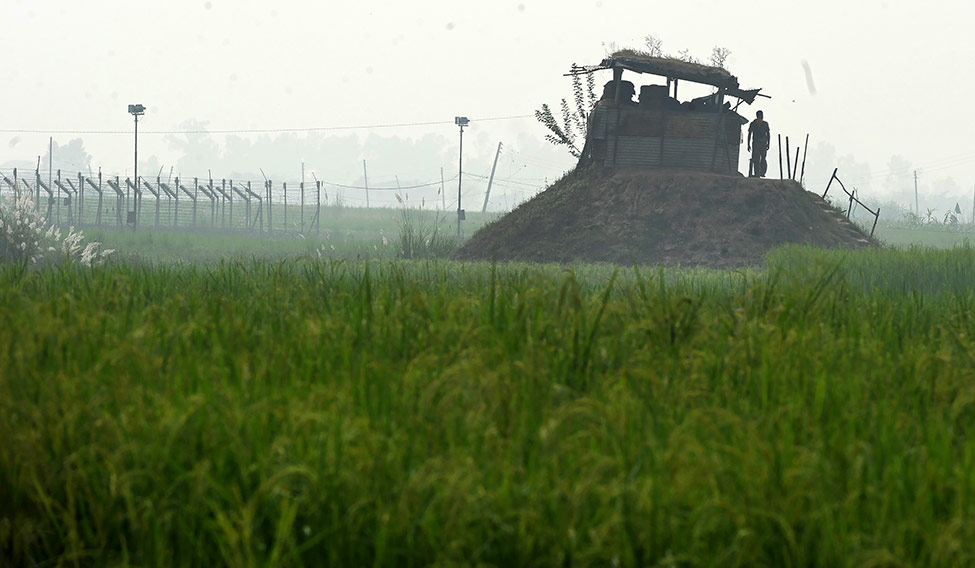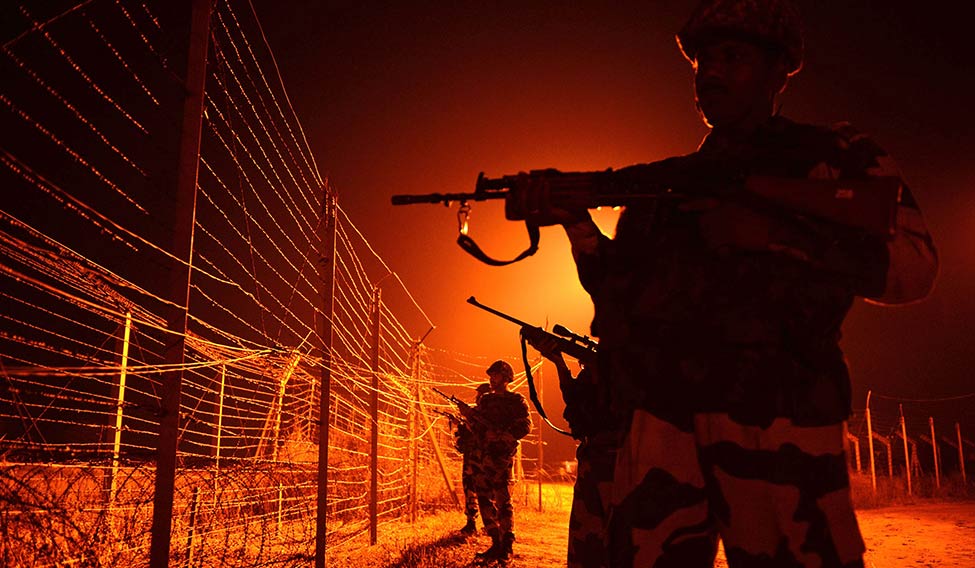US President Donald Trump may be looking at building a 3,200km-long wall along the US-Mexico border to block illegal immigrants, but in India, Prime Minister Narendra Modi has other plans when he talks of sealing the border with Pakistan by December 2018. Taking a leaf out of the book of the countries with unruly borders, the government is drawing up a strategy to keep Pakistan at bay.
In addition to the US-Mexico stretch where unmanned drones, infrared video and the US patrol vehicles are keeping an air to ground vigil, tips were taken from the world’s most heavily fortified border of a divided country. The demilitarised zone (DMZ) in North Korea and South Korea exuded confidence, with its barbed fences along the 250km stretch. Some of the security features employed there are not visible, but do the job perfectly well.
When Home Minister Rajnath Singh visited Israel in November 2014, he saw how Israel guards its border with Palestine in Gaza Strip and West Bank. Not a single suicide bomber has managed to cross Israel’s border with Gaza after it imposed stricter security measures on the borders, Singh was told. India’s Comprehensive Integrated Border Management System was conceptualised after the attack on the Pathankot Air Force Station in January last year by terrorists who allegedly came from Pakistan by crossing the international border. An integral part of the plan is the air-to-bottom fortification of 2,300km of India-Pakistan border under the control of the home ministry.

“The new fencing will have a multi-tier security ring comprising an alarm to alert security force personnel in case of any infiltration bid,” said Minister of State for Home Kiren Rijiju. “We will have smart fencing at all our borders, but priority will be given to the Indo-Pak frontier.”
The plan for sealing the border gained pace after the cross-border surgical strikes by the Indian Army on September 29 last year to avenge the terrorist attack on the Army base in Uri on September 18. The trial run of a pilot project that lasted more than six months has just got over and the border guarding forces are upbeat. “I could detect the movement of even a small bird. Unlike in the past where we have used technology in select sensitive areas along the border, the idea now is to use it completely along the international border,” said an official who was part of the testing team.
According to ministry officials, the Border Security Force has successfully conducted field trials of seven types of technology—radars, day and night cameras, underground sensors, underwater sensors, fibre optic cable sensors, electro optic sensors and micro aerostats—in the infiltration-prone areas of Jammu.
The BSF has been using laser beam detection systems, but it faced challenges of continuous power supply, fog penetration, and maintenance and repair handicaps. “Technology is advancing fast and we must keep pace with it,” said M.L. Kumawat, director-general, BSF. “Moreover, we must understand that technology will not replace the border guarding forces. The manpower deployment will always be there just like we have not stopped using the camels on the Rajasthan border. Each component has its own use and efficiency, and it has to be an amalgam of all.”
Sources in the security establishment said the BSF had been given the go-ahead to fly drones or balloons for aerial surveillance, employ exclusive underwater sensors for securing the vulnerable riverine stretches along the international border and use state-of-the-art technology for ground and underground security to detect infiltration and launch a counter offensive immediately.
The fibre optic cable sensors would detect movement—both on the surface and underground—and emit laser pulses on a real time basis. Over the past decade, at least eight tunnels, which were being used by terrorists to evade the multiple-tier security ring, have been detected by the Indian border guarding forces.
 Tech support: A BSF post along the India-Pakistan border. The new security system would help the soldiers man the posts better | AFP
Tech support: A BSF post along the India-Pakistan border. The new security system would help the soldiers man the posts better | AFP
The shallow riverine stretches in Punjab would have underwater sensors. It would be different from the sonar system that the Navy uses to detect and track surface and sub surface targets in both active and passive modes of operation, said an official of the intelligence wing of the BSF. He explained that unlike the deep sea, the river waters are shallow along the international border where the range requirement is completely different.
“For the first time, we have integrated the different types of technology to be used. For example, if the overground or underground water sensors sound an alarm, it would be reflected on a common screen in a 24/7 control room and automatically the cameras would zoom in and the other technologies would get activated to counter the threat,” said a senior home ministry official. “Secondly, the technology we are employing is the latest to be used in the world”
Finding the right people to handle the technology is crucial. “The bigger challenge now will be to have enough manpower to understand the technology and be deployed in the control rooms 24/7,” said K. Srinivasan, former inspector-general, who served in the intelligence wing of the BSF. “In the past, high-end devices were procured but not used effectively. We will need experts to sit and study the imagery being captured and analyse it on a real time basis. Manpower will also be required for quick and regular maintenance and observation.”
The focus now shifts to Punjab and Gujarat. The marshy terrain of Kutch and the vulnerable stretch in Punjab would be included in the next round of field trials that are likely to be completed by early next year. The cost of the trials is under Rs 20 crore so far, but once the system is fully implemented, it is likely to cost the government more than Rs 200 crore. But the government is ready to loosen its purse strings to fulfil Modi’s promise.







